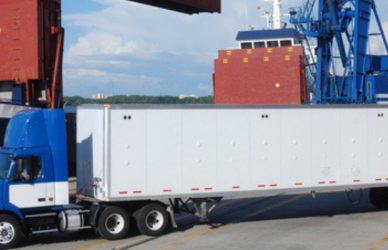The trucking industry offers a multitude of career opportunities. Whether you’re a novice in the field or a seasoned driver, diversifying your skill set with endorsements is a wise move. Among the various roles available, hazmat tanker driving stands out. If you’re contemplating a career as a hazmat tanker truck driver, here are some crucial aspects to consider.
Understanding Hazmat Tanker Driving
Hazmat tanker drivers are tasked with transporting, delivering, and safely disposing of hazardous materials. These materials encompass a wide range, from gases, explosives, corrosive chemicals, to poisons and radioactive substances. However, it’s essential to note that hazmat tanker drivers are not solely confined to transporting hazardous cargo; they can also operate non-hazardous tankers.
Meeting the Prerequisite Requirements
Becoming a certified hazmat tanker driver necessitates adding specific endorsements to your existing Commercial Driver’s License (CDL). You’ll undergo specialized training tailored to the transportation and handling of hazardous materials. After obtaining your CDL, you’ll be required to complete an application process that includes:
- Proof of identity, demonstrating you are at least 21 years old.
- Verification of citizenship or legal residency.
- A comprehensive medical examination, including an eye test.
- Successful completion of the HAZMAT knowledge test.
Navigating Increased Responsibility and Stress
Truck driving is inherently demanding, with safety being a paramount concern. Hazmat tanker drivers face additional stress and responsibility due to the heightened risks associated with transporting hazardous materials. Accidents or spills can have far-reaching consequences, making meticulous planning and caution essential. Hazmat drivers must map out their routes meticulously and remain alert throughout their journeys.
Cultivating Essential Skills
Truck driving demands a unique set of skills, making it a career choice that’s not suited for everyone. Hazmat tanker drivers require a specialized skill set to excel in their role. Beyond technical proficiency, personal qualities such as punctuality, attention to detail, and patience are invaluable. These attributes contribute to becoming a safer and more effective hazmat tanker driver in the long run.
Earning Potential
One of the alluring aspects of hazmat tanker driving is the potential for higher earnings. This is because the job demands more experience and expertise to handle hazardous cargo safely. According to salary.com, the average salary for hazmat tanker drivers in the United States is approximately $63,035. However, individual salaries can vary widely based on factors such as education, certifications, experience, and additional skills. The salary range typically falls between $55,660 and $72,277, making it a financially rewarding career path for those willing to meet its demands.
Environmental Awareness
Hazmat tanker drivers play a crucial role in environmental protection. Their responsibility extends beyond the safe transport of hazardous materials; they must also be acutely aware of the potential environmental impact of their cargo. Stricter regulations and advanced safety measures are in place to prevent spills and contamination. Drivers are trained to respond swiftly and effectively to minimize environmental damage in the event of an accident. Environmental consciousness is a core aspect of hazmat tanker driving, ensuring that both the public and ecosystems remain safe from harm.
Ongoing Training and Certification
In the ever-evolving landscape of hazmat transportation, continuous learning is paramount. Hazmat tanker drivers must commit to ongoing training and certification updates to stay abreast of new regulations and industry best practices. Keeping their knowledge current not only enhances their safety on the road but also ensures they remain in compliance with changing standards. Staying informed and up-to-date is a hallmark of a responsible hazmat tanker driver.
Emergency Response Preparedness
Hazmat tanker drivers are at the forefront of emergency response in the transportation sector. They undergo specialized training to handle hazardous material incidents effectively. From chemical spills to leaks, drivers are equipped to react swiftly, implementing containment procedures to mitigate risks and protect lives. Preparedness in emergencies is a skill honed through training, enabling hazmat tanker drivers to respond calmly and professionally when faced with crisis situations.
Risk Management and Insurance
Effective risk management is crucial in hazmat tanker driving. Drivers and their employers must be well-versed in the insurance requirements and liabilities associated with transporting hazardous materials. Adequate insurance coverage is essential to safeguard against potential financial repercussions in the event of accidents or incidents. Being diligent in risk management not only protects the driver and their employer but also ensures the responsible handling of hazardous cargo.
Equipment Maintenance
Maintaining the integrity of tanker equipment is of paramount importance for hazmat tanker drivers. Regular inspections and maintenance checks are imperative to prevent equipment failures that could lead to hazardous material spills or accidents. A well-maintained vehicle ensures both safety on the road and the secure transport of potentially dangerous materials. Hazmat tanker drivers take pride in the upkeep of their equipment, understanding its critical role in their profession.
Health and Wellness
The demanding nature of hazmat tanker driving underscores the importance of maintaining good health and wellness. Long hours on the road, coupled with the stress of handling hazardous materials, can take a toll on a driver’s physical and mental well-being. Hazmat drivers prioritize their health through proper nutrition, regular exercise, and adequate rest, ensuring they are fit to handle the rigors of the job safely.
Regulatory Compliance
Compliance with federal, state, and local regulations governing hazmat transportation is non-negotiable. Hazmat tanker drivers must adhere to these regulations meticulously, as non-compliance can lead to severe consequences, including fines, penalties, and legal actions. Being well-versed in the applicable laws and regulations is a fundamental aspect of hazmat tanker driving, underscoring the commitment to safety and legality in the profession.
Industry Outlook
The hazmat tanker driving industry is dynamic and influenced by various factors. Understanding the current industry outlook, including job prospects, market trends, and technological advancements, is vital for those considering this career path. Staying informed about developments in the sector helps hazmat drivers adapt to changes and make informed decisions about their careers.
Advancement Opportunities
Hazmat tanker driving offers not only a rewarding career but also potential avenues for advancement. Experienced drivers can explore opportunities such as becoming safety specialists, trainers, or supervisors. The expertise gained in hazmat transportation can open doors to other roles within the transportation sector, providing career growth prospects for those dedicated to the profession.
Embarking on a career as a hazmat tanker driver is a path filled with challenges, responsibilities, and rewards. Beyond the core considerations of qualifications, safety, and earnings, aspiring hazmat drivers must embrace the role’s environmental stewardship aspect, commit to lifelong learning, and stay prepared for emergencies. Moreover, diligently managing risks, maintaining equipment, prioritizing health, and adhering to regulations are all critical facets of this profession. As the hazmat tanker driving industry evolves, the commitment to safety and compliance remains unwavering. With a clear understanding of these factors, individuals can make informed decisions about entering this field, where their dedication can contribute to both personal growth and the safe transportation of hazardous materials.











